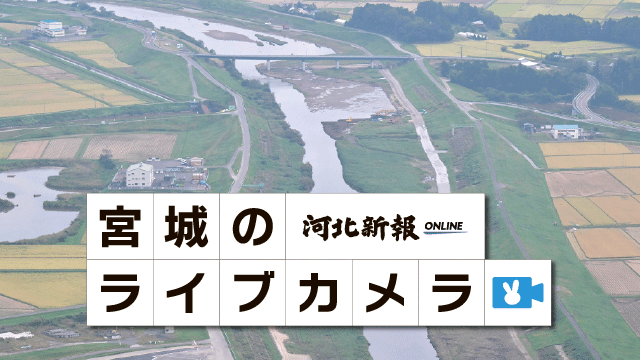Part 4: School (1) Initial Response / Quick Judgment, Omitting Evacuation to the Schoolyard




The Great East Japan Earthquake happened during daytime on a weekday, when many children and students were still in school. Especially for schools located in the coastal areas, teachers, parents, and local residents were forced to make last-minute decisions as the tsunami approached. What could they do to guarantee the safety of the children? We consider lessons learned from the disaster and tasks for preparation. (“Preserve Lives and Communities” Investigation team)
◎First reach high ground, then go even higher
When a strong earthquake occurs, take a roll call in the schoolyard before evacuating. The severe shocks of the Great East Japan Earthquake defied existing conventions for tsunami evacuation among the schools. After the earthquake, educators were forced to reevaluate their initial response to disasters.
March 11, 2011, 2:46 p.m. A huge tremor shook Togura Elementary School of Minamisanriku Town, Miyagi Prefecture, located on low-lying ground 300 meters from the ocean.
Atsushi Asokawa (55), principal at the time, crouched down at the faculty room on the first floor. The children should have been playing in the schoolyard. Looking outside the window, he saw the teachers hurriedly rushing over to the children. Troubled by the long quake, he went through the evacuation route in his mind.
According to their evacuation manual for earthquakes and tsunamis, the first procedure was to evacuate near the oak tree at the southern end of the schoolyard, furthest from the school building and without danger of falling debris. After roll call, they were to escape to an area known as "Utsuno Hill," located 400 meters away.
It felt like nearly five minutes had passed since the earthquake. Asokawa remembered the words of an expert: "In the worst case, a tsunami can come in three minutes." It would take around five minutes for all students to relocate to the oak tree. "There's no more time," he thought.
The tremors settled. "Go to higher ground immediately. We’re skipping the first phase of evacuation!"
The vice principal passed on these directions to each classroom. Still with their indoor shoes on, the children ran out the school entrance as homeroom teachers checked to make sure no students were left behind.
The portable radio held by the vice principal announced, "A major tsunami warning has been issued." "Escape!" "Run!" Starting with the lower grade students, they all started to run.
First grade homeroom teacher Sanae Saito (53) led the way. Looking back, she saw that even the girls that had been sobbing during the huge tremor were evacuating in silence. A total of 91 students reached higher ground by 3 p.m., including the third through sixth graders, and the first and second graders who had remained at the schoolyard after school.
Around 30 minutes later, the tsunami rushed into the schoolyard. It continued without faltering and approached the hill. Asokawa quickly ordered a “second escape” to Isuzu Shrine, which stood higher up.
The children and faculty rushed up the steep stairs. Asokawa brought up the rear, and by the time he finished climbing, violent waves had engulfed the platform below. The three-story school building had already disappeared under the turbid waters.
It was the experience of a foreshock, two days earlier, which influenced his decision to omit the first phase of the evacuation plan and add a second phase.
That day, they gathered in the schoolyard and took attendance, then ran towards higher ground after hearing the tsunami advisory on the radio. Asokawa questioned these procedures, thinking, "Is it really fine to remain at an area prone to flooding?”
The faculty had previously considered evacuating to the roof of the school building. Saito then suggested they evacuate to Isuzu Shrine on higher ground. She was a long-time employee of Togura Elementary, and was familiar with the damage from the Chile Earthquake Tsunami in 1960.
The tsunami took one student on the way home, as well as a part-time faculty member.
There are no manuals against natural disasters that are 100% safe. The will to “Escape earlier, move higher” in order to protect lives lead to the unexpected answer.
◎Important lessons from Okawa Elementary / Reconsidering evacuation plans for the Nankai Megathrust Earthquake
What is the best way to evacuate children to a safe area in limited time? Educators in Kochi and Aichi Prefectures, where the Nankai Megathrust Earthquake is predicted to cause major damage, are searching for ways to reduce evacuation time such as omitting roll calls in the schoolyard, based on lessons from the Great East Japan Earthquake.
“The school that will be hit by the largest tsunami in Japan.” This is what local educators call Saga Elementary School (121 students) with caution in Kuroshio Town, Kochi Prefecture. It is located 6.1 meters above sea level, approximately 700 meters from the ocean.
According to damage predictions of the Nankai Megathrust Earthquake, given by a national experts committee in August 2012, a tsunami near Saga Elementary may reach a maximum height of 34.4 meters. At the earliest, a one-meter high tsunami is predicted to reach the area in 10 minutes.
After the 2011 earthquake, the school significantly changed their evacuation rules. If an earthquake occurs while they are in the school building, each class would determine safety and run up the mountain behind the school (60 meters above sea level). They had previously planned to gather at the schoolyard, take roll call, and escape to a public park near the ocean (20 meters above sea level).
According to Kuroshio Town, six elementary and junior high schools, including Saga Elementary and Nango Elementary, are in danger of flooding from the Nankai Megathrust Earthquake. After the 2011 disaster, all of these schools decided to discontinue the procedure of taking roll call in the schoolyard.
One of the driving factors behind these revisions was the tsunami damage at Okawa Elementary School in Ishinomaki City. There is thought to have been nearly 50 minutes between the start of the earthquake and the arrival of the tsunami. However, the decision to evacuate was made too late after gathering in the schoolyard, and 84 children and faculty, as well as many residents, lost their lives to the tsunami. Now, a third-party group of experts has formed an accident investigation committee, and are looking into the main causes of this event.
Masako Nishioka, principal of Saga Elementary, states, "They must have had a strong conviction that a ‘tsunami wouldn’t come,’ and did not think to evacuate quickly to higher ground. The lesson from Okawa Elementary, to avoid getting caught in assumptions, is extremely important.”
Similar to Kochi Prefecture, coastal areas in Aichi Prefecture such as Tahara City are also exposed to the menace of the tsunami. Mikio Ishii, vice principal of Horikiri Elementary (113 students), says, "Our school is similar in size to Okawa Elementary, so we couldn’t distance ourselves from their tragedy.” The school started reconsidering evacuation sites a mere one month after the earthquake.
The school is located on the tip of the Atsumi Peninsula, in a village 700 meters from the ocean. It only stands five meters above sea level, and it is predicted that a 15-meter tsunami will come within 30 to 35 minutes during the Nankai Megathrust Earthquake.
Their original evacuation site was the third floor of the school building, but the plan was changed to evacuate to higher ground (28 meters above sea level) located 1.3 kilometers away. Taking the advice of a specialist, the school aimed to complete evacuation within 15 minutes of the earthquake.
Rather than taking roll call at the schoolyard, the faculty would ride bikes to lead the way and check the safety of evacuation routes. At the same time, the vice principal would look for any children left behind in the school building. If the path is blocked by fissures in the ground or fallen concrete walls, they would immediately switch to another escape route.
After the introduction of endurance training three times a week as well as indoor shoes that are easy to run in, it became possible for the entire student body to evacuate within 15 minutes. Vice principal Ishii expressed his determination, stating, "I hear that the tremors lasted for several minutes during the earthquake. Aftershocks may cause us to pause during evacuation. We can't waste one minute."
Translated by Aurora Tsai
March 28, 2013 (Thurs.)
[Japanese] http://www.kahoku.co.jp/special/spe1114/20130328_01.html
 朝刊・夕刊
朝刊・夕刊 記事を探す
記事を探す FAQ
FAQ















